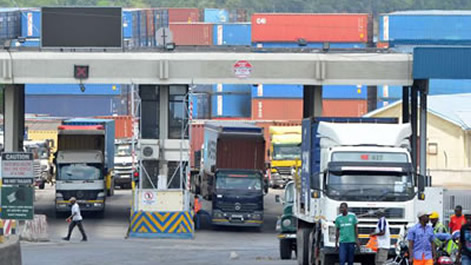Navigating the Seas: Unveiling the Main Disadvantage of Water Transport
3 min read
Water transport has been a vital mode of transportation for centuries, enabling the movement of goods and people across vast distances. From ancient sailboats to modern cargo ships, water transport offers numerous advantages such as cost-effectiveness, high carrying capacity, and reduced carbon emissions. However, like any other mode of transportation, it also has its drawbacks. In this article, we will delve into the main disadvantage of water transport, exploring its implications and potential solutions.
The Main Disadvantage: Limited Accessibility and Inland Connectivity
While water transport provides an efficient means of transporting goods across oceans, seas, and large rivers, its main disadvantage lies in its limited accessibility and inland connectivity. Unlike road or rail transport, which can reach almost any location with a network of interconnected routes, water transport heavily relies on navigable waterways, such as rivers, canals, and ports. This limitation poses challenges for areas that lack direct access to these water bodies, hindering their integration into global trade networks.
Implications:
- Inland Transportation Costs: One of the significant implications of limited accessibility is the increased cost of inland transportation. Goods transported by water often require additional handling and transportation via other modes, such as trucks or trains, to reach their final destinations. This adds extra expenses, including fuel costs, labor, and infrastructure maintenance, which can impact the overall cost-effectiveness of water transport.
- Time Efficiency: Limited accessibility can also result in longer transit times. When goods need to be transferred from a water vessel to another mode of transport, delays can occur due to logistical challenges, congestion, or unfavorable weather conditions. These delays can affect supply chains, leading to potential disruptions and increased lead times for businesses relying on water transport.
- Regional Economic Disparities: The limited accessibility of water transport can contribute to regional economic disparities. Areas with direct access to navigable waterways and well-developed port infrastructure tend to benefit from increased trade opportunities, foreign investments, and economic growth. On the other hand, landlocked regions or those lacking efficient inland connectivity may face challenges in attracting investments and participating fully in global trade, potentially exacerbating economic inequalities.
Potential Solutions:
- Infrastructure Development: Investing in infrastructure development is crucial to overcome the limitations of water transport. Governments and relevant stakeholders should focus on improving port facilities, constructing or upgrading inland waterways, and enhancing intermodal connectivity. This includes developing efficient logistics hubs and establishing reliable transportation networks that seamlessly integrate water transport with other modes.
- Intermodal Integration: Promoting intermodal integration can help mitigate the disadvantages of water transport. By improving the coordination and efficiency of transferring goods between different modes of transportation, such as water, rail, and road, the overall transportation process can be streamlined. This approach reduces handling costs, minimizes transit times, and enhances the accessibility of water transport for landlocked regions.
- Technological Advancements: Embracing technological advancements can also address the limitations of water transport. Innovations such as automated cargo handling systems, real-time tracking and monitoring solutions, and improved weather forecasting can enhance the efficiency, safety, and reliability of water transport operations. Additionally, the development of eco-friendly propulsion systems and alternative fuels can contribute to reducing the environmental impact of water transport.
Conclusion:
While water transport offers numerous advantages, its main disadvantage lies in limited accessibility and inland connectivity. Understanding the implications of this drawback is crucial for policymakers, businesses, and stakeholders involved in the transportation industry. By investing in infrastructure, promoting intermodal integration, and embracing technological advancements, we can overcome these challenges and unlock the full potential of water transport, fostering economic growth, and sustainable trade in both coastal and landlocked regions.

